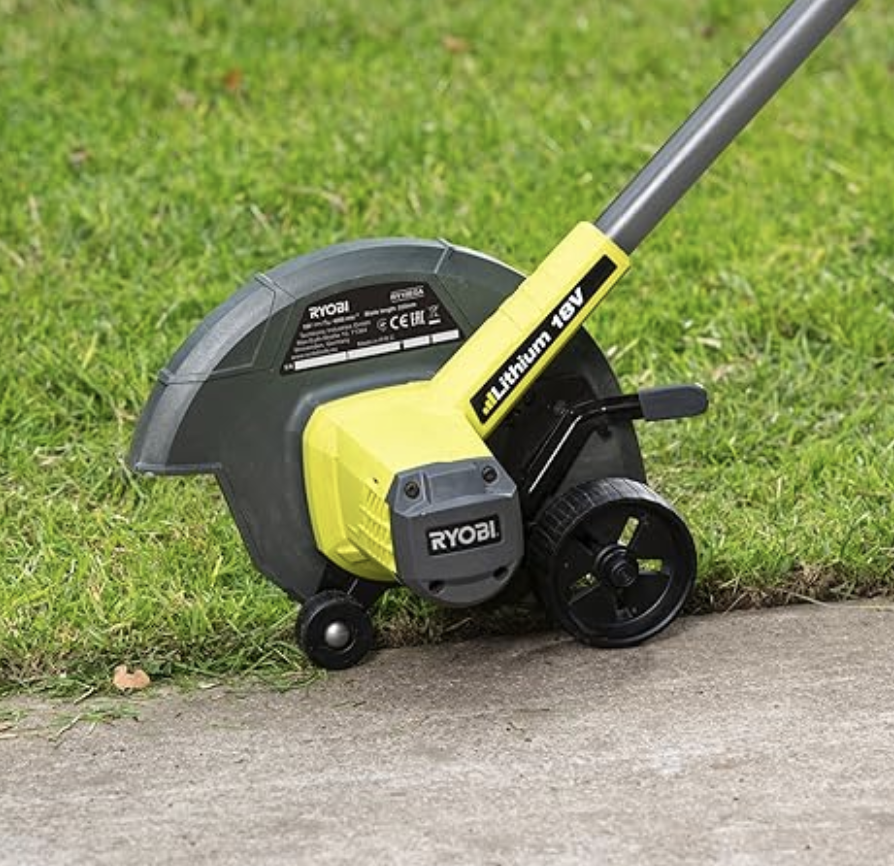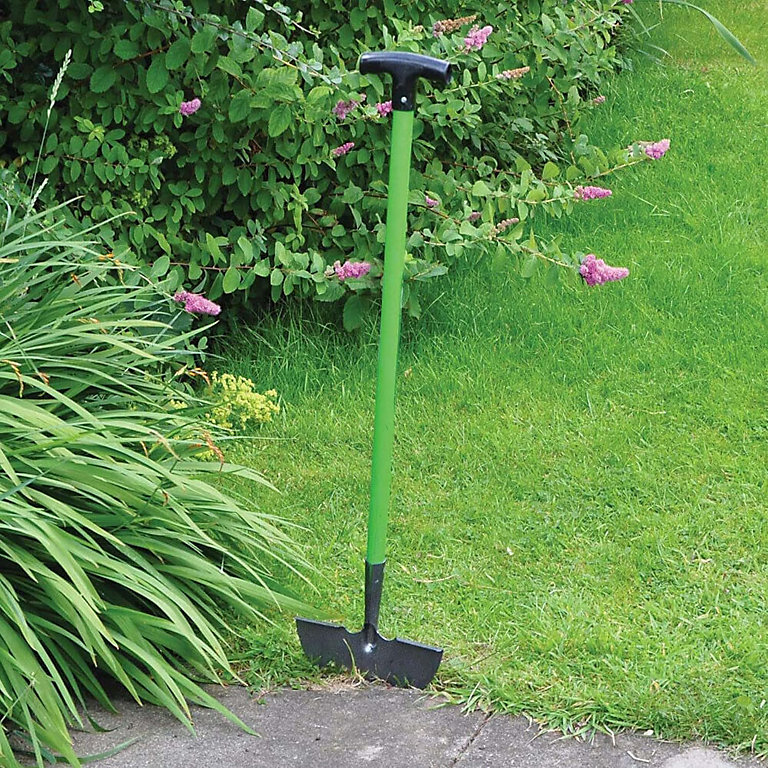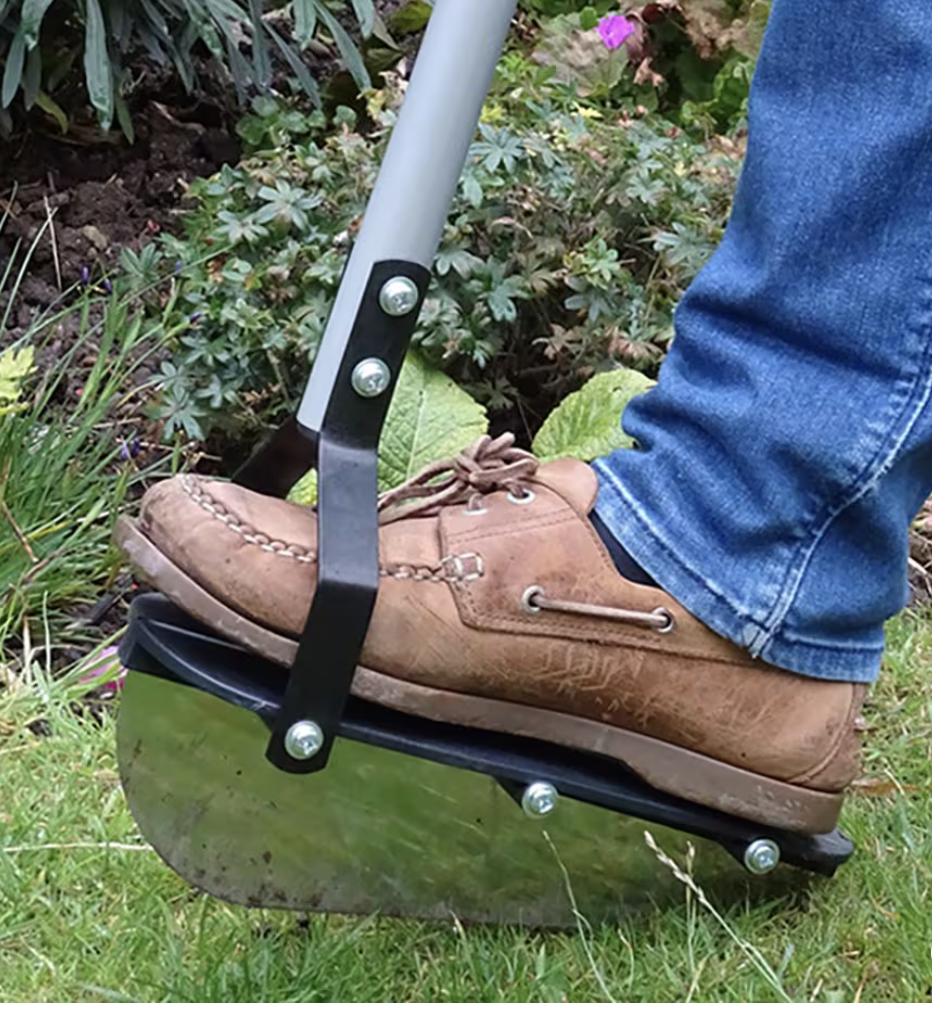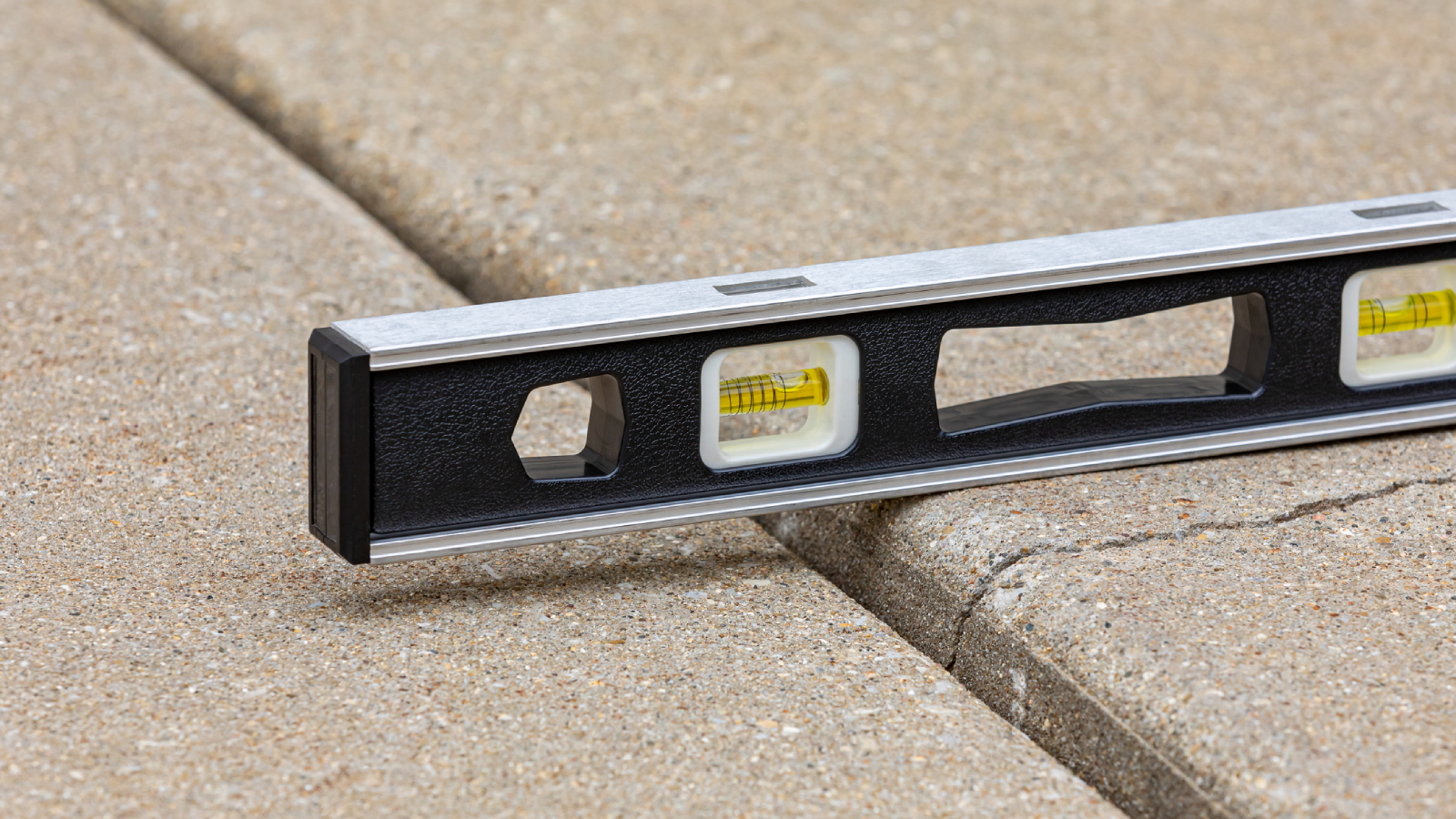How to edge a lawn for a pristine finish
How to edge a lawn for a neat and fresh look as well as improving the health of your grass
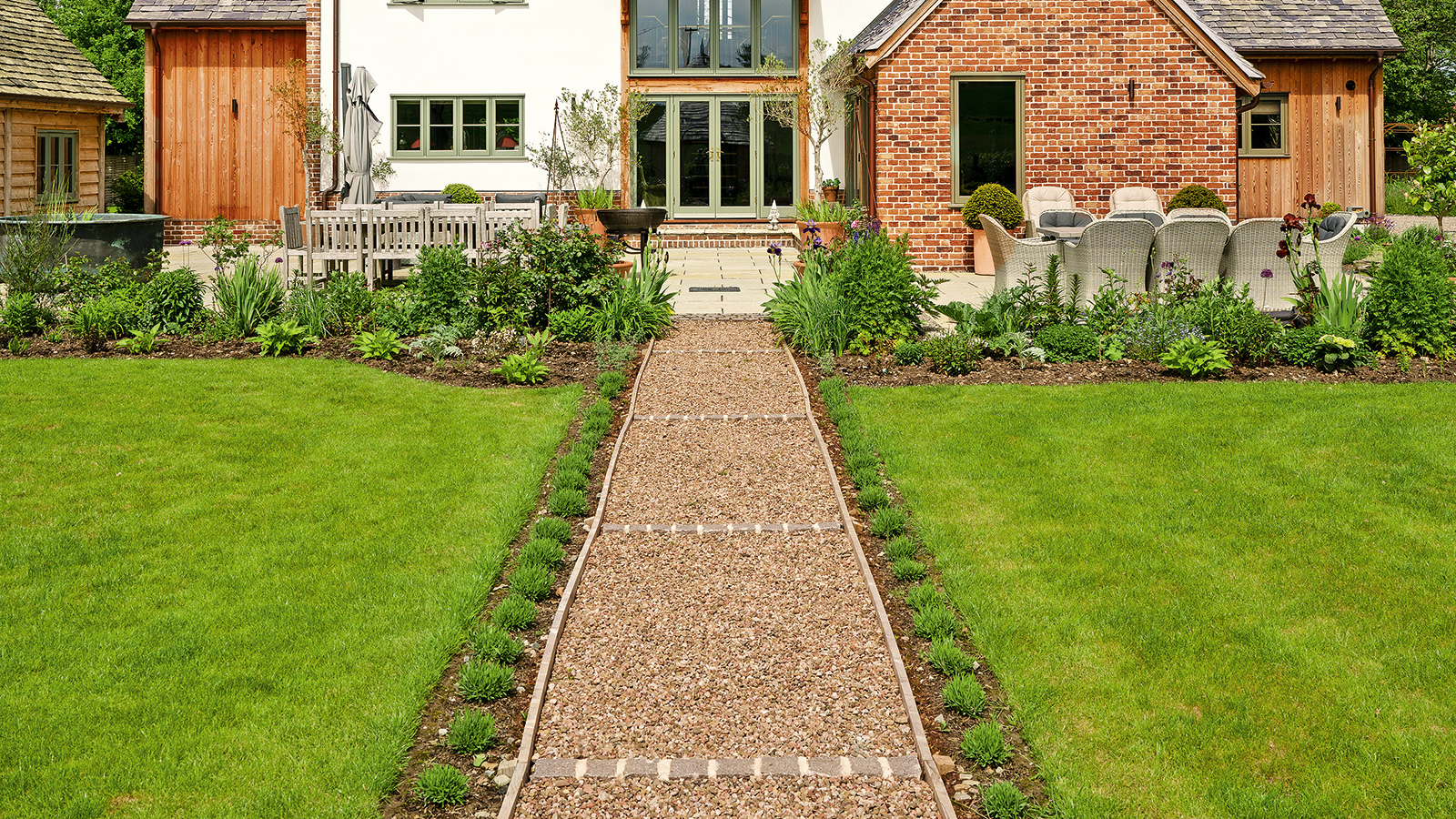
Learning how to edge a lawn is a great way to smarten up the look of your grass. Whether you're aiming to cut a different shape into your lawn or smooth an existing edge, it's a garden landscaping task which, with the right tools, most people will be able to tackle without difficulty.
As well as aesthetics, regularly edging your grass is essential lawn care. "When grass is edged properly, the water drains away from the grass more efficiently, preventing. It also means grass won't grow into your flower beds or other places you don't want it," says lawn maintenance expert at Allan's Gardeners Jane Dobbs.
What you need to edge a lawn
Common edging tools include half-moon edgers, spades with straight edges or electric edgers. Depending on the scale of your task you will probably find that a manual edging tool will do the job well and give you good precision. However, if you have a large lawn or tough soil then consider a motorised tool.
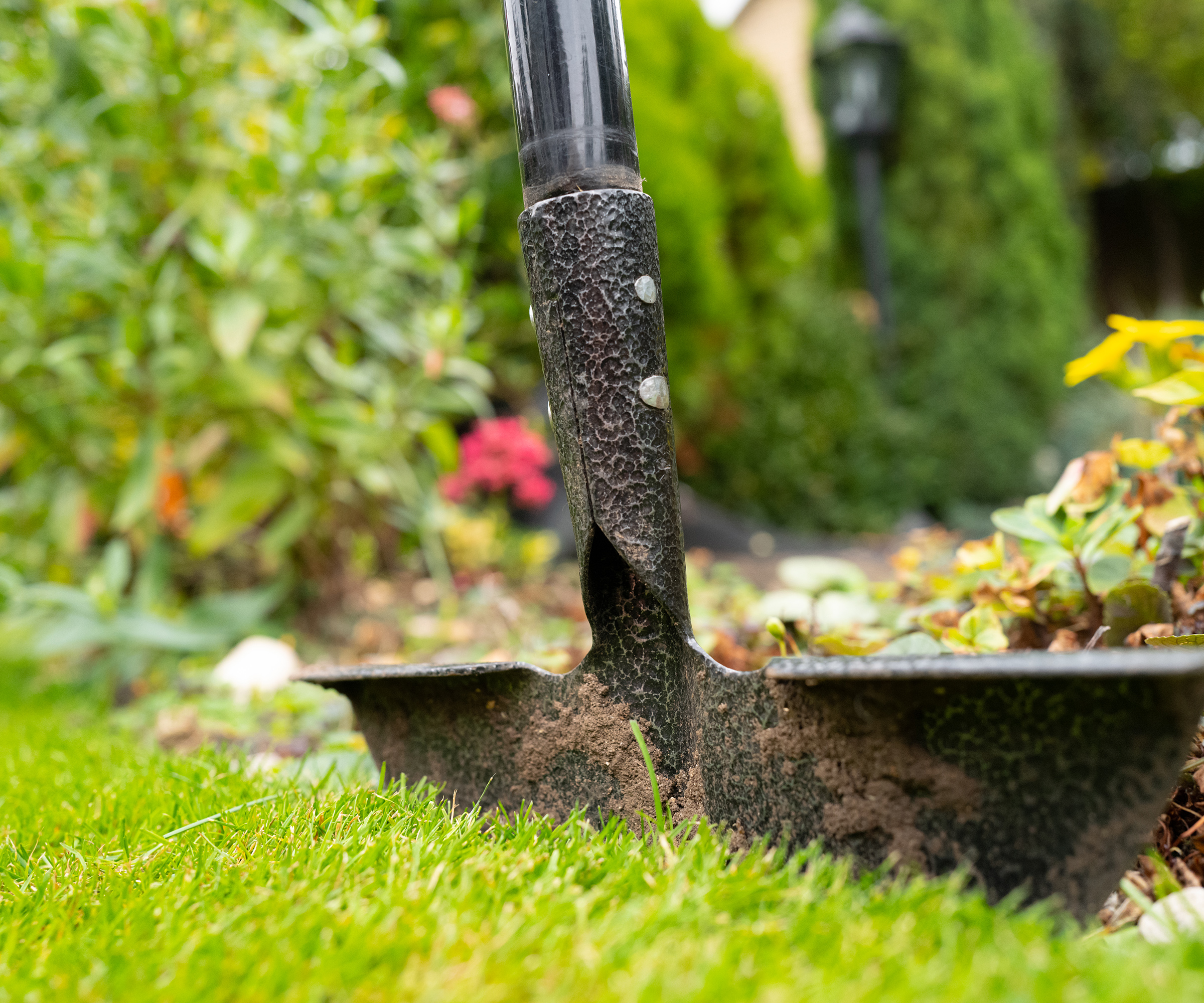
- Lawnmower
- String or garden hose
- Manual or motorised edging tool
- Hand shears or edge trimmer
Shop lawn edging tools
How to edge a lawn
Lawn edging is best done on a dry day. Moist soil is best but avoid edging a lawn on waterlogged soil. Clear the ground of any stones, twigs or other debris which might blunt the blades of your edging tool.
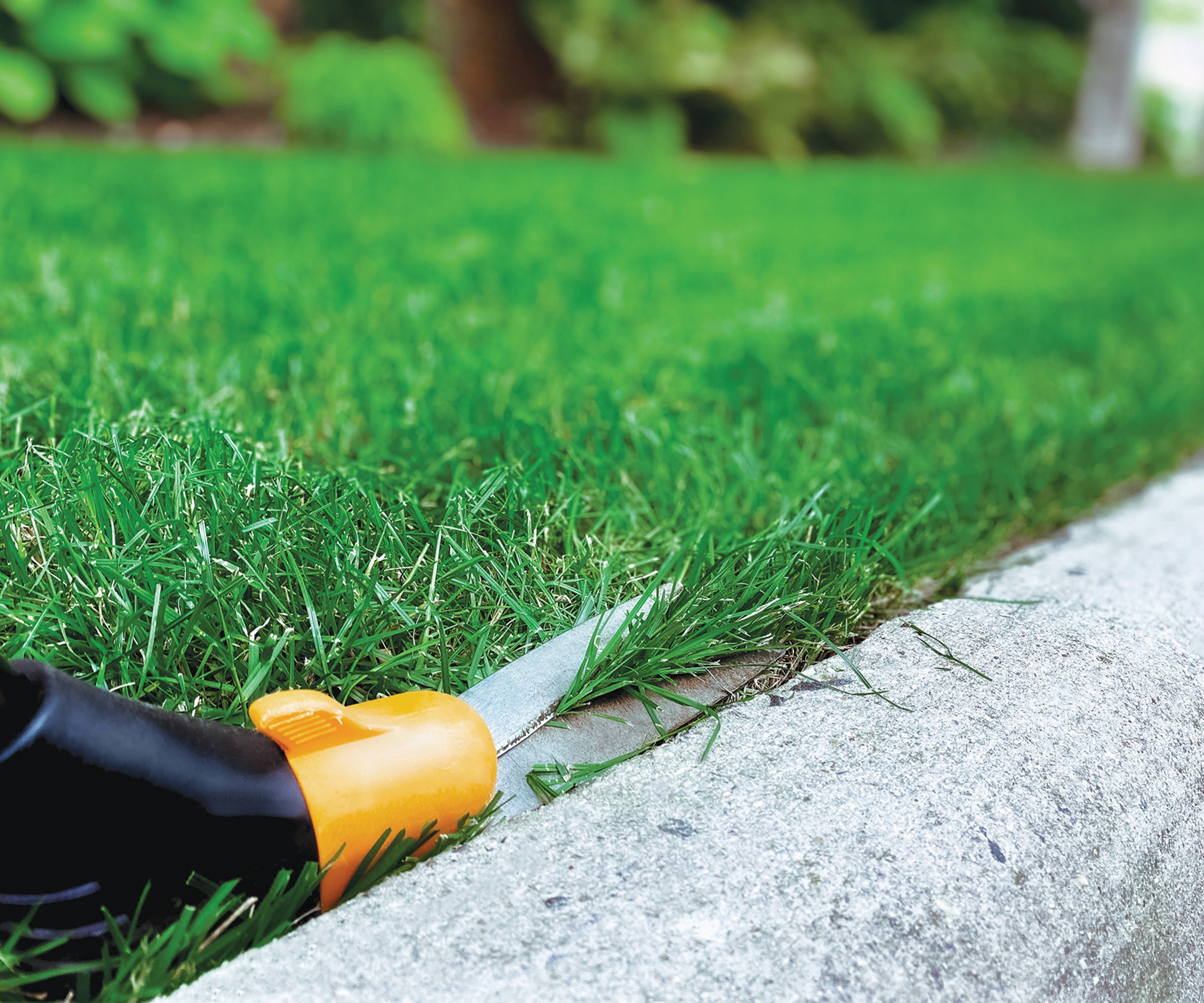
- Mow the lawn: the best time to mow a lawn is before you map out your edging. This is an important step as it helps create a more level space to work with plus you'll be able to see the edge of your grass more clearly.
- Mark out your edge: this can be done using multiple different devices. Some people use chalk spray, I personally don't favour this method as, although most are temporary and some claim to be "eco friendly" you're still adding chemicals to your lawn and there's the faff of washing the chalk off afterwards. String is good for marking straight edges but if you're adding a curve I recommend using a garden hose.
- Make the cut: "Use the manual edging tool or your motorised edging tool to cut round the lawn. To do this manually, cut into the ground along your line and rock your tool backwards and forwards to make the cuts. Make sure the cut is roughly 8cm deep. You might have to go into your cut multiple times to achieve this," says Lee Trethewey, garden landscaping and design expert at Sustainable Furniture.
- Neaten and finish: remove your markers and clear up the cut-away turf. Use your edging shears to cut away any grass which is hanging over the edge.

Working in the industry for 10+ years, Lee is an expert in all things interior and garden design, as well as well versed in eco-friendly practices and sustainable sourcing.
FAQs
Should you mow before or after edging?
"Mowing the lawn with the best lawnmower before edging will help to establish the boundaries of your lawn and you can check that the remaining grass is cut to the same length, which can help to avoid overgrown or uneven patches," says Graham Smith MCIHort, a gardening expert from LBS Horticulture,
"It can also make the lawn look more consistent, which can be harder if you edge the lawn first. It is better to mow first if you're cutting long grass or your lawn full of weeds, as it will remove the thick layer of grass that would make edging much harder."

Graham has extensive knowledge in the horticultural and gardening industries, and prides himself on using this to help gardeners of all skills create their perfect outdoor space.
What is the easiest tool to edge a lawn with?
"If you have a small garden lawn, using a pair of long-handled edging shears with telescopic handles can make it easy to edge your lawn without damaging your back. If you have a larger lawn or want to complete the job faster, the best tool to use is an electric edger or a grass trimmer that has an edging setting," says Graham Smith MCIHort, a gardening expert from LBS Horticulture,
Bring your dream home to life with expert advice, how to guides and design inspiration. Sign up for our newsletter and get two free tickets to a Homebuilding & Renovating Show near you.
How do I get the best edges on my lawn?
"To get the best edges in your lawn, make sure that you set a clear, clean line for you to follow. Otherwise you'll wind up with a wonky edge that you won't be happy with. You should think about whether you want curved edges or not when you create your lines, but if you're not certain, leave more lawn than less," says Lee Trethewey, garden landscaping and design expert at Sustainable Furniture:
"You should also make sure that you use a sharp tool, as this will mean that creating the edges is easier, and you'll need to go over them fewer times to reach 8cm deep."
"You should edge your lawn every month or as needed to prevent overgrowth," advises Jane Dobbs. In addition to edging your lawn, have a look at our guide on how to get rid of weeds on lawns.

Teresa was part of a team that launched Easy Gardens in 2018 and worked as the Editor on this magazine. She has extensive experience writing and editing content on gardens and landscaping on brands such as Homes & Gardens, Country Homes & Interiors and Living Etc magazine. She has developed close working relationships with top landscape architects and leading industry experts, and has been exposed to an array of rich content and expertise.
In 2020 Teresa bought her first home. She and her partner worked alongside architects and builders to transform the downstairs area of her two bedroom Victorian house in north London into a usable space for her family. Along the way she learned the stresses, woes and joys of home renovation, and is now looking to her next project, landscaping the back garden.
